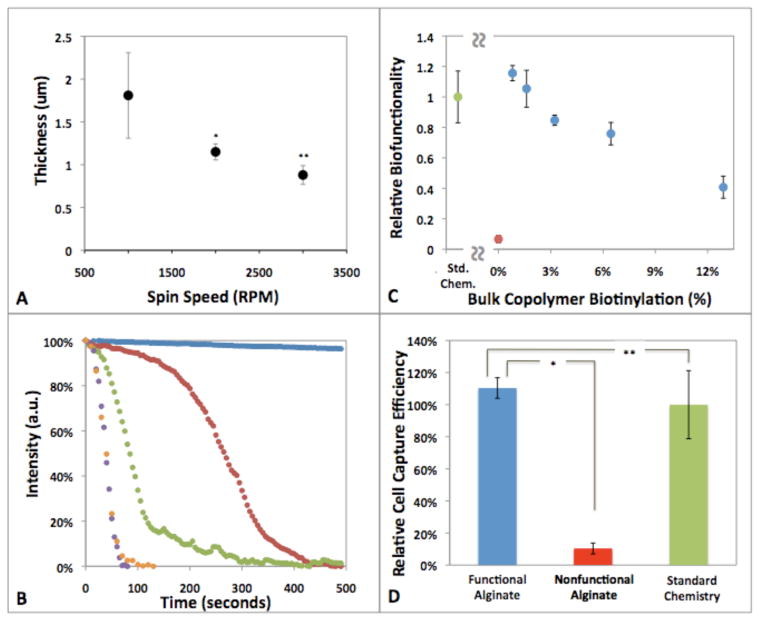Figure 2.
Alginate hydrogels were formed with (A) micron-scale thickness using a spincoating process (* p = 0.017; ** p < 0.001). (B) Upon treatment with alginate lyase at various concentrations (50 (red), 100 (green), 250 (purple), 1000 (orange) ug/mL, control PBS (blue) ), photocrosslinked hydrogels rapidly degraded in a dose-dependent fashion. Gels were (C) functionalized using gel-bound biotins, and an inverse trend between bulk biotin density and functionality was observed. A static cell capture assay (D) demonstrated that the functional material (blue) captured cells with an efficiency comparable (* indicates p = 0.45) to standard surface modification approaches (green), while non-functional gels (red) resisted physisorbtion of capture molecules and non-specific cell binding (** indicates p < 0.001).

